Sharpening Gouges and Drawknives with a Lapidary Wheel
Chairmaker Russ Filbeck demonstrates how he gets his drawknives and carving gouges sharp in short order.
The heart of chairmaker Russ Filbeck’s grinder is a 3-in.-wide by 8-in.-diameter lapidary wheel that is commonly used for polishing cabochon stones and for jewelry making. The lapidary wheel is a rubber wheel consisting of inner and outer races connected by fingers. When the wheel is idle, the abrasive belts are loose on the wheel, making it easy to switch to different grits. When the wheel is spun up to speed, the centrifugal force causes the outer race to expand, and the wheel tightens up on the abrasive belt.
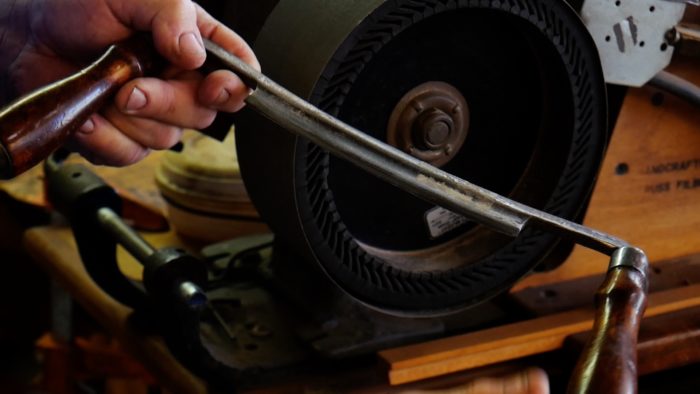
When starting out with a new, unsharpened tool or an old rusty one, Russ starts with a 100-grit belt and works his way through the grits to 600-grit for the final polish. Moving through the grits is very quick because it’s just a matter of shutting off the motor, sliding one belt off, sliding the next belt on, and starting the machine again.
It used to take Russ an hour to hone a gouge, and now he can do all of his gouges in an hour.
Supplies:
8 x 3-in. Rubber expanding lapidary wheel
8 x3-in. sanding belts
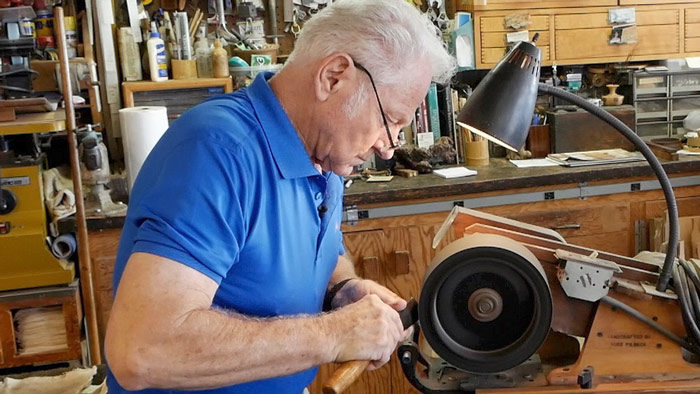
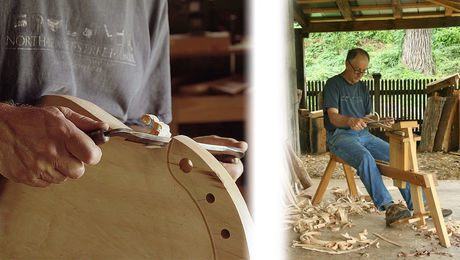 |
How To Sharpen and Use a Drawknifeby Curtis Buchanan |
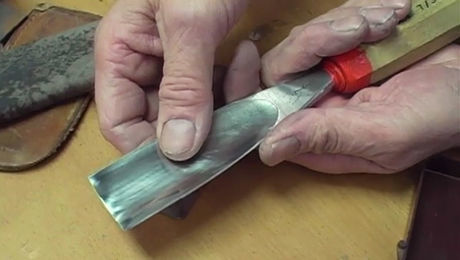 |
Sharpening: Curved Blade Edgeswith Bob Van Dyke |
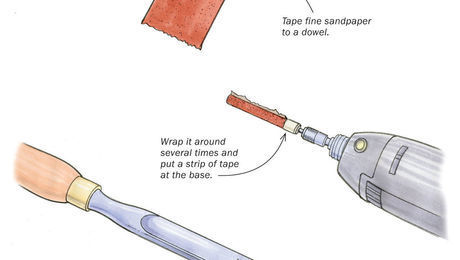 |








Comments
Where can you find a wheel and belts like the ones Mr Filbeck uses? I did a web search and I only found solid wheels.
Sorry, I just posted a couple of links in the article. Both are from Rio Grande, a jewelry supply that Frank Strazza turned me onto. It's a pretty fantastic resource.
Beautifully designed sharpening methods Russ. Thank you for sharing those ideas with us, one of my drawknives is most definitely a chisel!!
That looks like a custom jig you have for a spindle and motor. Do you have any details on that? Short of that, do you have any suggestions for optimal RPM for such a setup? My grinder turns in the opposite direction, so I suspect I would have to build something to spin in the correct direction.
Also, thank you for clearing up a question I had about rounding the heel of the bevel for carving tools. My father did that to mine many years ago and I was never sure if why that would be desirable or even if it was correct. Now I know.
Log in or create an account to post a comment.
Sign up Log in